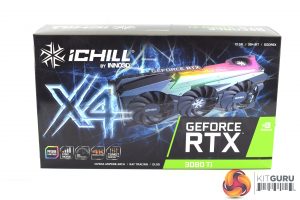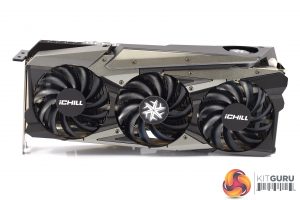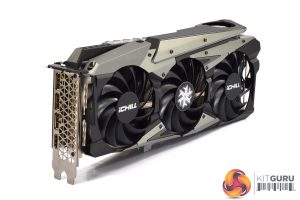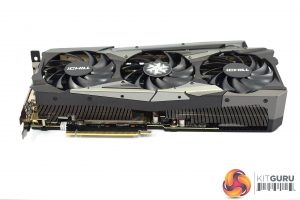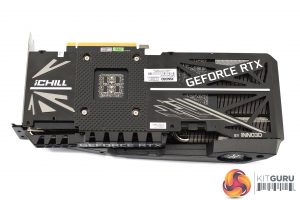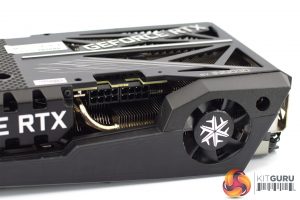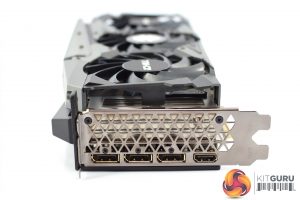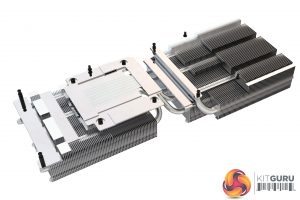As for the Inno3D RTX 3080 Ti iChill X4, this ships in an eye-catching box, with a large image of the card visible next to the X4 branding.
Inside we find the usual array of documentation, but also two RGB cables which can be used to connect the card to your motherboard (or other RGB device) to control the lighting that way.
The card itself is certainly not for the faint of heart. It sports a very aggressive design, using a combination of metal and plastic, with plenty of angles and sharp edges. It's certainly not a subtle design!
We can also note three 90mm fans used, but the iChill X4 has a party trick – it actually has a fourth fan placed on the front side of the card, used to provide extra cooling for the VRM. It's quite unique.
As for sizing, the X4 measures 300 x 135mm, while it's approximately 58mm thick, so again you will need three free expansion slots.
Looking at the backplate, it's keeping in trend with a rather eye-catching design – Inno3D is certainly not playing things ‘safe' here, but I do quite admire that!
We can also note 2x 8-pin power inputs, while we also get a closer look at the 45mm fan designed to aid VRM cooling. For video outputs, we find 3x DisplayPort 1.4 and 1x HDMI 2.1.
PCB and heatsink images supplied by Inno3D.
Ahead of this review, Inno3D asked us to not disassemble the card, likely so thermal results aren't affected for any future testing. The company did, however, supply us with render images of the PCB and cooler.
While we can't say for certain based on the renders, it appears Inno3D is using the reference design, with a similar layout to the Gigabyte Gaming OC. We can see a total of 19 phases, again likely split with 15 for the GPU and 4 for the memory. Memory is also from Micron, with the model code OKT77D88GX.
As for the heatsink, this uses a total of eight heatpipes, seven of which make contact with the GPU while the eighth is using for VRM. The memory modules contact with a metal plate section that sits around the central heatpipes.
 KitGuru KitGuru.net – Tech News | Hardware News | Hardware Reviews | IOS | Mobile | Gaming | Graphics Cards
KitGuru KitGuru.net – Tech News | Hardware News | Hardware Reviews | IOS | Mobile | Gaming | Graphics Cards


